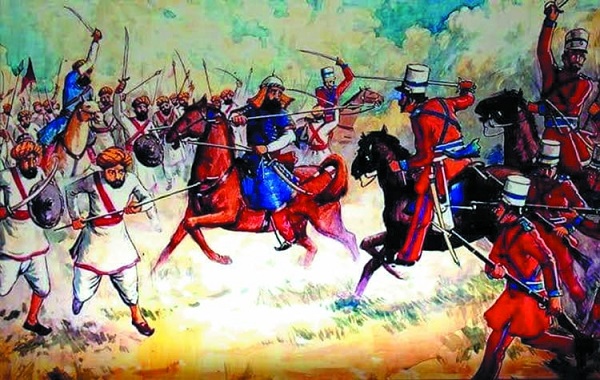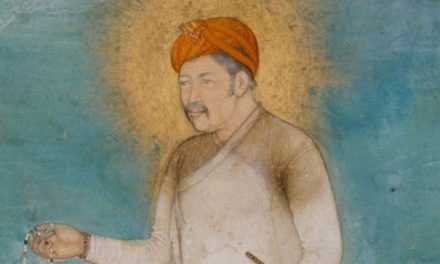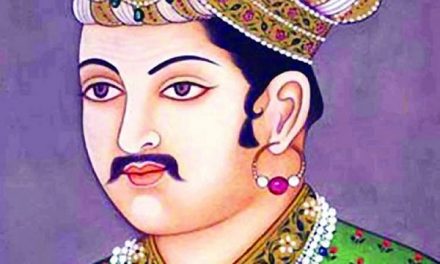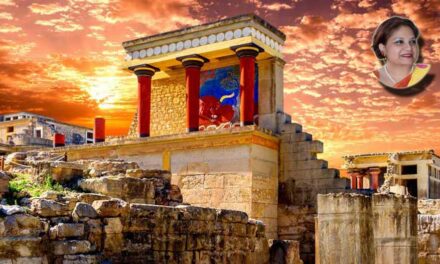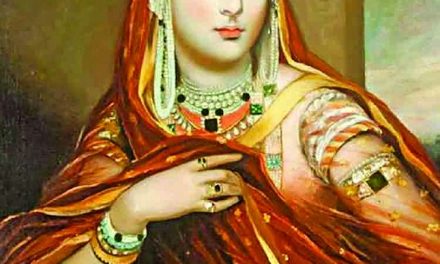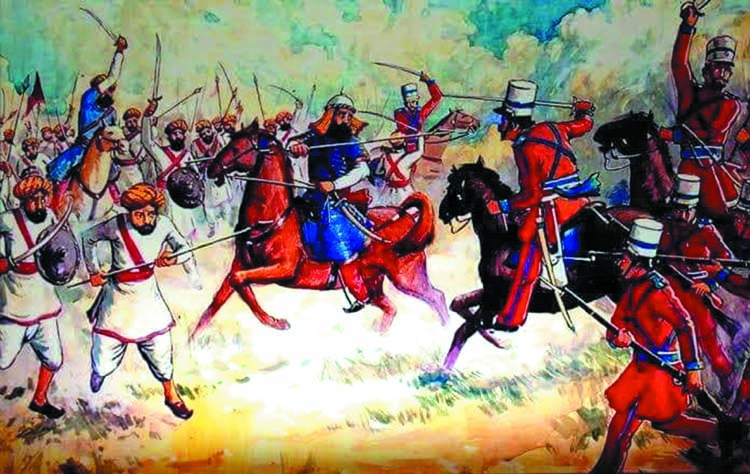
In a world not too far back into the past, the harmony of Bengal, Bihar and Orissawasn’t left unperturbed. All the way from Europe, the British heard of the land of Gold; soil so fertile and rich; and of the magical hands that weaved cotton, silk and muslin so magnificently that the world would fall to its knees to obtain such luxuries.
Upon the arrival of the British settlers, they met naïve people with hearts of gold and instantly foresaw how they could use the latter to suit their advantages.
In 1757, Bengal, Bihar and Orissa were already under the grasp of European trade market companies like the East India Company. And throughout the years they managed to plunder the Indian subcontinent discreetly.
Since the Queen of the United Kingdom of Great Britain could not supervise these companies properly all the way from Britain, the companies began openly seizing the wealth for their personal use.
Through suppression and repression tax was collected from the farmers. The rich grew richer while the poor starved and toiled in order to meet such high demands of taxation. The British did not show a shred of humanity.
Mir Jafar Ali Khan Bahadur was the Nawab of Bengal at that time, but he was dependent on the British East India Company himself as he had to shake hands with them, behind the true Nawab Sirajuddaula to obtain the title of Nawab. Thus he was only an acting Nawab under Robert Clive, Commander-in-Chief of British India.
Lacking the alms and the arms of a proper ruler, there wasn’t a soul to sympathize with the common people. The Zamindars were selected to lord over the farmers and collect tax from them to submit to the ominous British East India Company. They were threatened to be stripped off of their titles if they failed to obtain a frightful amount of tax.
The Food Crops and Horticulture Crops reduced significantly in amount as the farmers were forced to do Indigo and Cotton plantations by the atrocious British. These Cash Crops ruined the fertile soil and the farmers starved along with their families for the lack of sustenance from their Food Crops. A famine occurred.
Skin and bones holding onto each other for dear life, the farmers worked tirelessly but couldn’t meet ends. They were forced to take loans from Dadons, which came to play withsky-high interests. The common people carried the burden of debts to meet the unjust cravings of the abominable British.
When the due dates of the loans were reached and the debtors failed to deliver, their lives were imperiled by the Dadons;their wives were carried off, their children were murdered or they were tortured to the inch of their lives. Hearts in hand, the farmers protested. They revolted. Their helpless cries were lost in echoes as the British lorded over them with power and superiority. Their rebellion was in vain.
Majnun Shah, the leader of a large group of Fakirs who were traveling through Bengal, claimed in 1772 that 150 of them had been killed without cause by the British in the previous year. Such repression was one of the reasons that caused distress leading to violence, especially in Natore in Rangpur, now in modern Bangladesh.
When the Company’s forces tried to prevent the Sannyasis and Fakirs from entering the province or from collecting their money in the last three decades of the 18th century, fierce clashes often ensued, with the Company’s forces not always victorious. Most of the clashes were recorded in the years following the famine but they continued, albeit with a lesser frequency, up until 1802.
The reason that even with superior training and forces, the Company was not able to suppress sporadic clashes with migrating ascetics was that the control of the Company’s forces was weak in the far-removed hilly and jungle covered districts like Birbhum and Midnapore.
The Santhal Tribe was a peaceful tribe that lived in the jungles on the tribal belt of what was then known as the Bengal Presidency. They hunted and gathered and lived in harmony with their kind. But the clash between them and the British were brought about when the Railway line workers started stealing their food.
The British suddenly realized that these Santhal people were not paying tax, and enforced it upon them. On the 30th of June 1855, the Santhal Rebellion began, but the movement was brutally ended by troops loyal to the British by the 3rd of January 1856. Their rebellion was in vain as well.
But the dreams woven about freedom were still breathing.
In 1857, after a solid hundred years, Bengal, Bihar and Orissa, had evolved education systems. A new society of decent British people settled in the Indian Subcontinents. But a diversity of culture and class was still witnessed. Native soldiers had a fee of 4 rupees whereas the white foreigners had a fee of 40 rupees.
Injustice still stayed rooted in the different corners of Bengal, Bihar and Orissa under the British rule. The frustration from the corruption that occurred still simmered through the veins of the poor and the common class. The difference in class between the British and the Madrazi and Bengal grew more and more prominent.
It all became a blaring issue when the British issued a special kind of rifle that required one to release the trigger with one’s mouth. This trigger was made of leather from cows and pigs.
For the Sepoys who practiced Islam, pigs were forbidden to be consumed. And for the Sepoys who practiced Hinduism, cows were forbidden to be consumed. When even after protesting about their religious rites, the British did not seem to even bat their eyes, the Sepoys’ frustration multiplied tenfold. The rage at the unfairness being orchestrated fueled them with courage.
The Sepoys decided that they will no longer be doormats. They will no longer be stepped over and second – bested. They will no longer accept anything less than what they truly deserve. With determination to earn the freedom that should have been warranted to them years and years ago, the Sepoys took up arms against the British.
In Meerut, on the afternoon of the 29th of March 1857, Lieutenant Baugh, Adjutant of the 34th Bengal Native Infantry, then stationed at Barrackpore was informed that several men of his regiment were in an excited state.
Further, it was reported to him that one of them, Mangal Pandey, was pacing in front of the regiment’s guard room by the parade ground, armed with a loaded musket, calling upon the men to rebel and threatening to shoot the first European that he set eyes on.
Mangal Pandey was an Indian soldier who played a key part in events immediately preceding the outbreak of the Indian Rebellion of 1857. He was a sepoy in the 34th Bengal Native Infantry (BNI) regiment of the British East India Company.
Baugh immediately armed himself and galloped on his horse to the lines. Pandey took position behind the station gun, which was in front of the quarter-guard of the 34th, took aim at Baugh and fired. He missed Baugh, but the bullet struck his horse in the flank bringing both the horse and its rider down.
Baugh quickly disentangled himself and, seizing one of his pistols, advanced towards Pandey and fired. He missed. Before Baugh could draw his sword, Pandey attacked him with a talwar and closing with the adjutant, slashed Baugh on the shoulder and neck and brought him to the ground.
English SergeantMajor Hewson, had arrived on the parade ground, summoned by a native officer, before Baugh. He had ordered Zamindar Ishwari Prasad, the Indian officer in command of the quarter-guard, to arrest Pandey. After a lot of effort and lost sword combats on the British side, Pandey was still full of spirit and fighting.
While he was in combat with Baugh, Sergeant-Major Hewson struck Pandey with a blow at the back of his head. Pandey was then captured, arrested and executed within 10 days of getting arrested.
While contemporary British opinion denounced him as a traitor and mutineer, Pandey is a hero in modern India and Bengal.
The 34th B.N.I. Regiment was disbanded “with disgrace” on the 6th of May 1857 as a collective punishment, after an investigation by the government, for failing to perform their duty in restraining a mutinous soldier and their officer.
That came after a period of six weeks while petitions for leniency were examined in Calcutta. Sepoy Shaikh Paltu was promoted to sergeant for his loyalty to the British on the 29th of March, but he was murdered in an isolated part of the Barrackpore cantonment shortly before the regiment was disbanded.
In Delhi, the Mughal Emperor of the Red Fort Bahadur Shah Zafar, an 82 year old man, was told by the British that his lineage ends with him on the throne. Bahadur Shah’s successor would be appointed by the British and he would have no say in it.
The 82 year old man had little else but the success and security of his family to look forward to. He then panicked for the future of his family and was then advised to aid the revolt against the British by Mirza Galib, his royal advisor.
The disbanded regiment of Sepoys arrived at Bahadur Shah’s doorstep with an aim and agenda against the British. They were sparked up to fight. Thus, Bahadur Shah gained a small army but it wasn’t enough. So his son, Bakht, wrote letters announcing war on the British and sent them to far and wide corners of the subcontinent of India.
Bahadur Shah’s army grew in numbers with the various parties who also had agendas against the British. The Sikhs and the Nizam however did not answer Bakht’s letters. Later on, it was discovered that they shook hands with the British behind the Emperor’s back.
Bahadur Shah was a good man with outstanding morals and discipline. But he wasn’t a leader and his old age proved to make him vulnerable. The Sepoys therefore got derailed. They lost their cause in the process and became drunks and laggards, plundering their own kind for alms.
With old arms and no strong leaders to guide them whatsoever, the derailed Sepoys were left with no choice but to surrender. Bahadur Shah was arrested by the British and his family was ruthlessly slaughtered in front of his very own eyes. The British realized that the spillage of the Emperor’s blood would cause a greater rebellion against them to be orchestrated, so they deported Bahadur Shah.
These incidents created crippling tension throughout Bengal. The resistance in Chittagong and Dhaka and battles at Sylhet, Jessore, Rangpur, Pabna and Dinajpur had left Bengal in a further state of alert.
The Native Infantry of Chittagong rose in open rebellion and released all prisoners from jail on the 18th of November 1857. They seized arms and ammunition, ransacked the treasury, set the Magazine House on fire and proceeded towards Tippera.
The offensive of the Sepoys of Chittagong had an important bearing upon the company’s defensive posture at Dhaka. Being apprehensive of a further uprising of the Sepoys, the authorities sent three companies of the 54th Regiment and one hundred seamen to Dhaka.
Simultaneously, a Naval Brigade was sent to Jessore, Rangpur, Dinajpur and some other places of Bengal. Organized local volunteers consisting mostly of European residents took special measures for the protection of Dhaka. The situation became tense when the Naval Brigade arrived at Dhaka to disarm the Sepoys stationed there. On the 22nd of November, the Sepoys stationed at Lalbagh resisted the process of disarming.
Hanging and deportation were common results of the trials held for the captured Sepoys.
The role and reaction of various classes of people of Bengal during the Sepoy revolt paint a disturbing picture. The landed aristocracy was decidedly opposed to the Sepoys and some of them rendered logistic support to the Company authorities by supplying carts, carriages and elephants, informing the movements of the fleeing Sepoys and finally organizing local volunteer corps to resist the Sepoys.
The government acknowledged such services of the landed aristocracy with gratitude and subsequently awarded them titles of various distinctions and rewarded them with all sorts of worldly gains.
Following the role displayed by the landed aristocracy, the middle class too sided with the Company’s government. The common people and the peasantry as a whole were apathetic and remained untouched by the Sepoy revolt. Escapees were punished, tortured, mutilated and slaughtered. Blood rained on the Sepoys while the aristocrats shut their blinds and went to sleep without a glimpse of humanity.
This tragedy caused the Indian Subcontinent to go back a 100 years. History will retell this story till her dying breath and we will remember the heroes that were the framework of Bengal and the heart of the world we live in today.

